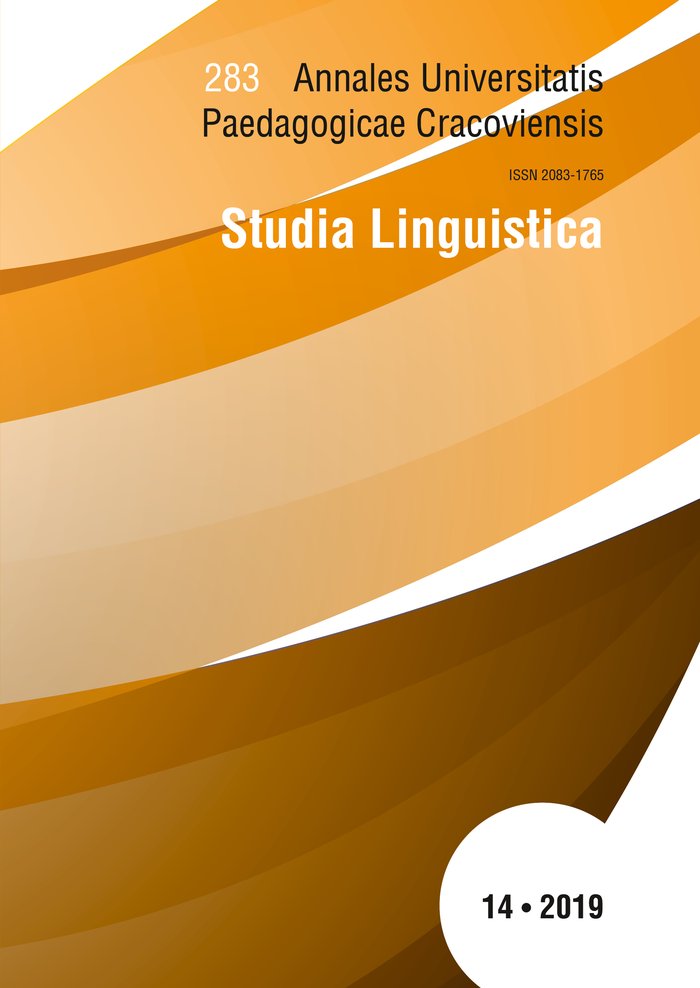Semantic history of obieżyświat
Main Article Content
Abstract
The article concerns the semantic development of the compositum obieżyświat ‘a person who likes to travel a lot’. It is interesting that the first attestation of the word in Old Polish (from the 15 th century) had a botanical meaning ‘Bupleurum rotundifolium L.’. The form obieżyświat was then the translation of the Old Latin plant names garowaga and girambula meaning ‘something that moves around’. The contemporary meaning of the compositum obieżyświat appeared only in the second half of the 19 th century.
Downloads
Article Details
Author, submitting a text to the editorial board of the journal “Annales Universitatis Paedagogicae Cracoviensis. Studia Linguistica", certifies that the content of the article has not been published so far and that the work does not violate in any way the copyright or related rights of other person, as well as other rights of third parties, and that no one's rights to the work (or any part thereof) have been missed. After signing the contract, the property rights to the published materials are transferred to the Scientific Publisher of the University of the National Education Commission, Krakow.
“Annales Universitatis Paedagogicae Cracoviensis. Studia Linguistica” is an open access journal, and all its content is made available free of charge to users and institutions under the Creative Commons CC-BY-NC-ND 4.0 license (attribution, non-commercial use, no derivative works). Under this license, the authors agree that their work may be lawfully reused for any purpose, except for commercial purposes, without the prior consent of the author or publisher. Everyone can read, download, copy, print, distribute and process these works, provided that the author's marking and the original publication place are correct. Published texts may not be used to create derivative works (e.g. to translate and publish in another language without the consent of the publisher). This is in line with the BOAI (Budapest Open Access Initiative) definition. "Studia Linguistica" does not charge for submitting or processing articles.
References
Dębowiak P., Ostrowski B., Waniakowa J., 2017, „Etymology in the Polish Academy of Sciences Great Dictionary of Polish”, Lexikos, 27, s. 597−608.
Google Scholar
Genaust H., 2005, Etymologisches Wörterbuch der botanischen Pflanzennamen, Dritte, vollständig überarbeitete und erweiterte Ausgabe, Hamburg.
Google Scholar
Machek V., 1954, Česká a slovenská jména rostlin, Praha.
Google Scholar
Marzell H., 2000, Wörterbuch der deutschen Pflanzennamen, t. I−V, Lizenzausgabe Parkland Verlag, Fotomechanischer Nachdruck der Erstausgabe 1943−1958, Köln.
Google Scholar
Spólnik A., 1990, Nazwy polskich roślin do XVIII wieku, Prace Komisji Językoznawstwa PAN w Krakowie, nr 58, Wrocław.
Google Scholar
Waniakowa J., 2012, Polskie gwarowe nazwy dziko rosnących roślin zielnych na tle słowiańskim. Zagadnienia ogólne, Kraków.
Google Scholar
